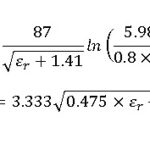Internet of Things (IoT) refers to a network of interconnected devices embedded with sensors, software, and connectivity that enables them to collect and exchange data over the internet. These devices can range from simple household appliances to complex industrial machinery. IoT works by allowing devices to communicate with each other and with centralized systems, often using cloud computing and data processing to analyze and act upon the data collected. This interconnectedness enables automation, remote monitoring, and smart functionalities across various sectors such as healthcare, transportation, and manufacturing.
IoT operates by connecting devices to the internet, enabling them to gather data, communicate with other devices or systems, and perform automated actions based on predefined conditions. For example, a smart thermostat in a home can monitor temperature and humidity levels, adjust settings based on user preferences, and communicate with a homeowner’s smartphone to provide real-time updates and control options. IoT applications extend to smart cities, where sensors in streetlights and traffic signals optimize energy use and traffic flow, demonstrating IoT’s impact on improving efficiency and sustainability.
An example of IoT is a smart wearable device like a fitness tracker. These devices collect data such as heart rate, steps taken, and sleep patterns using embedded sensors. The data is then transmitted to a smartphone or computer via Bluetooth or Wi-Fi connectivity. Users can access this data through companion apps to track their fitness goals, monitor health metrics, and receive personalized insights. IoT devices like fitness trackers exemplify how interconnected technologies can enhance everyday activities and improve personal well-being through data-driven insights and feedback.
IoT is integrated into daily life through various applications that enhance convenience, efficiency, and connectivity. For instance, smart home devices like voice-controlled assistants, smart thermostats, and security cameras allow users to control their environments remotely using smartphones or voice commands. IoT-enabled appliances such as refrigerators and washing machines offer features like remote monitoring and energy management, optimizing household chores and resource usage. In business settings, IoT sensors monitor equipment performance, track inventory, and automate processes to improve operational efficiency and decision-making.
The purpose of the internet in IoT is to facilitate communication and data exchange between interconnected devices and systems. By connecting IoT devices to the internet, data collected from sensors can be transmitted to centralized platforms or cloud servers for storage, analysis, and processing. This enables real-time monitoring, remote management, and automated decision-making based on the data insights generated. The internet serves as the backbone of IoT, enabling seamless connectivity, scalability, and interoperability across a wide range of devices and applications, thereby unlocking the full potential of IoT technologies in transforming industries and daily life.
